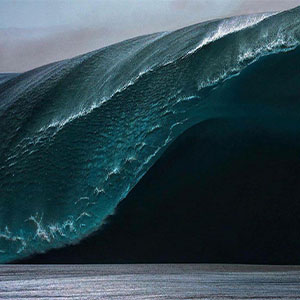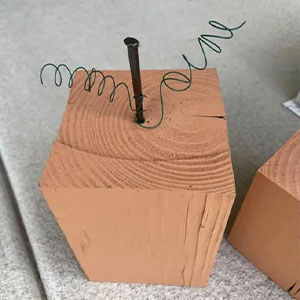
Join the Fun!
Join 1.2 million Panda readers who get the best art, memes, and fun stories every week!
Thank you!
You're on the list! Expect to receive your first email very soon!

\The.Journal/
Community Member

Author and artist:]
I love you <3



AcidScarab reply
I doubt this will be popular, but here goes… Not my profession anymore, but I sold diamonds (for engagement rings primarily) for a number of years, and have three separate certifications of expertise.
TLDR: diamond rarity is a more complex topic than people realize, and they are incredibly expensive to produce. Diamond companies have done s****y things in the past no doubt, but the stone itself gets a bad rap for no reason. Besides a sapphire or a ruby, if you put anything else in an engagement ring it will inevitably break regardless of how “pretty” you think it is.
The idea that diamonds are worthless, or should be much cheaper than they are, is incredibly misinformed. People talk about them being “common.” As in, there’s a lot of them mined out of the ground. That is true in a technical sense, but reflects a lack of understanding. 90% of diamonds that are mined are industrial grade and not suitable for jewelry. Of the remaining 10%, about 2/3 to 3/4 are of such low quality that you won’t ever see them being sold (color grade below K-M, clarity below I1). For people who don’t know what those grades mean, color has to do with the presence of nitrogen in the carbon chains that makes it look yellow and clarity is about imperfections in the crystal formation. The price of poor color and clarity jewelry quality stones will be accounted for later in this comment. Of the remainder, they get much rarer as they approach being “perfect” (D colorless, FL flawless color/clarity respectively). Size itself plays a huge factor, because while it’s true that numerically a lot of diamonds are mined, only about 1% are a carat or above in weight. I did the math on this once, and a flawless, colorless, 1 carat Diamond is a 1 in 10 billion stone. Really changes the understanding of what makes a diamond “rare.” Most diamonds also have some degree of fluorescence, which is as undesirable trait, so add in no fluorescence and it gets closer to 1 in a trillion.
However, all that aside, there’s elements of pricing strictly related to diamonds as a commodity. The cut quality of a diamond is absolutely crucial to how it looks and how it sparkles (no one wants a dull diamond). Cut quality is graded to microscopic specificity when it comes to angles and proportions (literally hundredths of a millimeter can effect the symmetry grading). As you probably already know if you read this far, diamonds are also the hardest substance on earth. Long story short, it takes an extremely skilled individual with extremely specific and expensive equipment to cut and polish a diamond and there are not that many of these people left, either. As you can imagine, they are paid very well, and that cost is incorporated into the stones.
There’s also the matter of sourcing the stones (before I get anything about bLoOd dIaMoNdS do some research, it’s not the 90s anymore. If you wanna talk about child labor in Africa, you better never consume chocolate, African coffee, or basically anything made over there at all). Anyway, back to the sourcing. Diamonds are mined out of kimberlite shafts, which go deep underground in the sides of volcanoes. They take about 10 years and a billion dollars to build. So there’s that. 90% of the stones mined are sold for industrial use in bulk for not a lot of money, so for it to even be economically sustainable, the money needs to come from somewhere just to cover costs of mining. Then cutting, not to mention the cost of transportation around the world in armored shipments.

8Ace8Ace reply
I'm an accountant. Whenever people jokingly talk about the good looking people in the office, it's always "Lisa from accounts".
As an accountant, I wish to point out that most of us look like a bulldog chewing a wasp.





KradeSmith reply
When I was a kid I was at a local river (a great swimming spot lots of people came to). My friend pushes me in the river and naturally I came up spluttering and a little red in the face, but it was all in good fun. For the rest of the day I planned to get her back, waiting for my opportunity to push her in, until she was at the edge of the river drying off. I pushed her, but her flailing and the slippery nature of the rocks she was on made her slip on the spot, and instead of just splashing into the water, she landed on her back hitting the rocks hard, and then fell into the water. She was winded, but thankfully otherwise unharmed. Our parents were furious at me, and I just spent the few seconds it took to get her out (felt like a lot longer to me) just hoping I hadn't broken her back or something. 2/10 revenge. Would not do again. Edit: Wow this really blew up! I hope we have all learned not to push people into pools and other bodies of water.













AcidScarab reply
I doubt this will be popular, but here goes… Not my profession anymore, but I sold diamonds (for engagement rings primarily) for a number of years, and have three separate certifications of expertise.
TLDR: diamond rarity is a more complex topic than people realize, and they are incredibly expensive to produce. Diamond companies have done s****y things in the past no doubt, but the stone itself gets a bad rap for no reason. Besides a sapphire or a ruby, if you put anything else in an engagement ring it will inevitably break regardless of how “pretty” you think it is.
The idea that diamonds are worthless, or should be much cheaper than they are, is incredibly misinformed. People talk about them being “common.” As in, there’s a lot of them mined out of the ground. That is true in a technical sense, but reflects a lack of understanding. 90% of diamonds that are mined are industrial grade and not suitable for jewelry. Of the remaining 10%, about 2/3 to 3/4 are of such low quality that you won’t ever see them being sold (color grade below K-M, clarity below I1). For people who don’t know what those grades mean, color has to do with the presence of nitrogen in the carbon chains that makes it look yellow and clarity is about imperfections in the crystal formation. The price of poor color and clarity jewelry quality stones will be accounted for later in this comment. Of the remainder, they get much rarer as they approach being “perfect” (D colorless, FL flawless color/clarity respectively). Size itself plays a huge factor, because while it’s true that numerically a lot of diamonds are mined, only about 1% are a carat or above in weight. I did the math on this once, and a flawless, colorless, 1 carat Diamond is a 1 in 10 billion stone. Really changes the understanding of what makes a diamond “rare.” Most diamonds also have some degree of fluorescence, which is as undesirable trait, so add in no fluorescence and it gets closer to 1 in a trillion.
However, all that aside, there’s elements of pricing strictly related to diamonds as a commodity. The cut quality of a diamond is absolutely crucial to how it looks and how it sparkles (no one wants a dull diamond). Cut quality is graded to microscopic specificity when it comes to angles and proportions (literally hundredths of a millimeter can effect the symmetry grading). As you probably already know if you read this far, diamonds are also the hardest substance on earth. Long story short, it takes an extremely skilled individual with extremely specific and expensive equipment to cut and polish a diamond and there are not that many of these people left, either. As you can imagine, they are paid very well, and that cost is incorporated into the stones.
There’s also the matter of sourcing the stones (before I get anything about bLoOd dIaMoNdS do some research, it’s not the 90s anymore. If you wanna talk about child labor in Africa, you better never consume chocolate, African coffee, or basically anything made over there at all). Anyway, back to the sourcing. Diamonds are mined out of kimberlite shafts, which go deep underground in the sides of volcanoes. They take about 10 years and a billion dollars to build. So there’s that. 90% of the stones mined are sold for industrial use in bulk for not a lot of money, so for it to even be economically sustainable, the money needs to come from somewhere just to cover costs of mining. Then cutting, not to mention the cost of transportation around the world in armored shipments.

8Ace8Ace reply
I'm an accountant. Whenever people jokingly talk about the good looking people in the office, it's always "Lisa from accounts".
As an accountant, I wish to point out that most of us look like a bulldog chewing a wasp.





 Dark Mode
Dark Mode 

 No fees, cancel anytime
No fees, cancel anytime 




























































